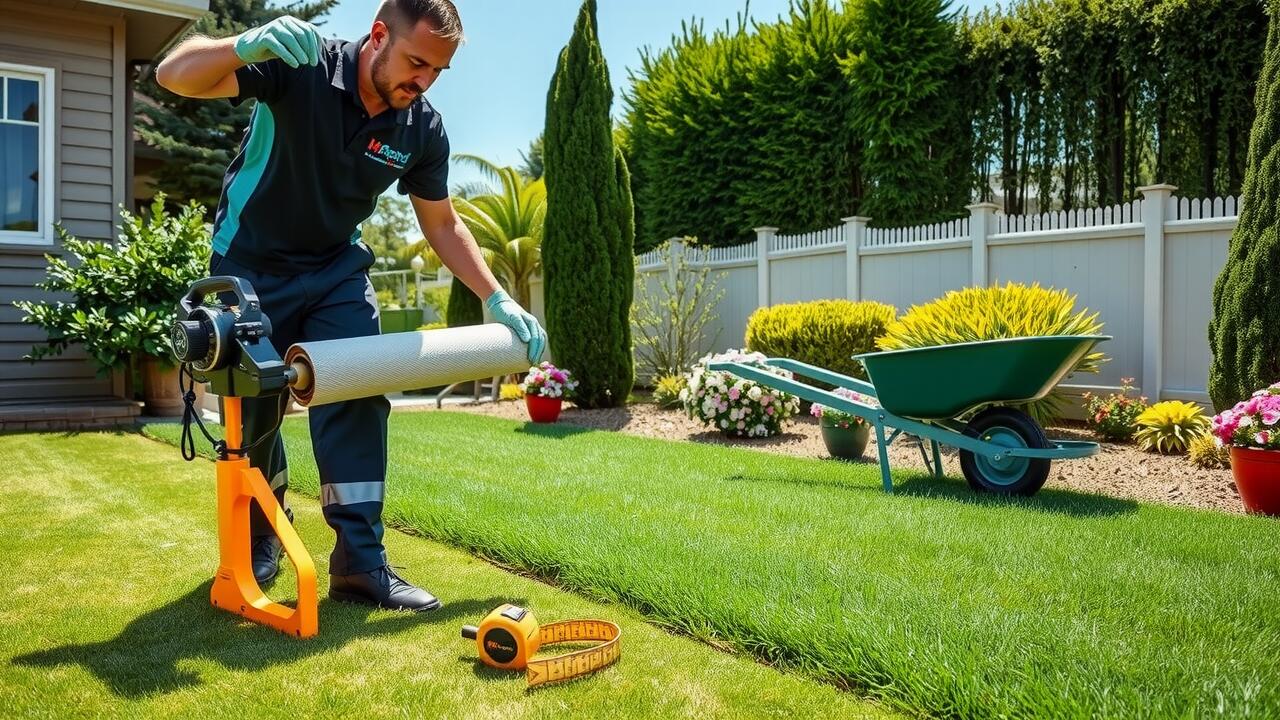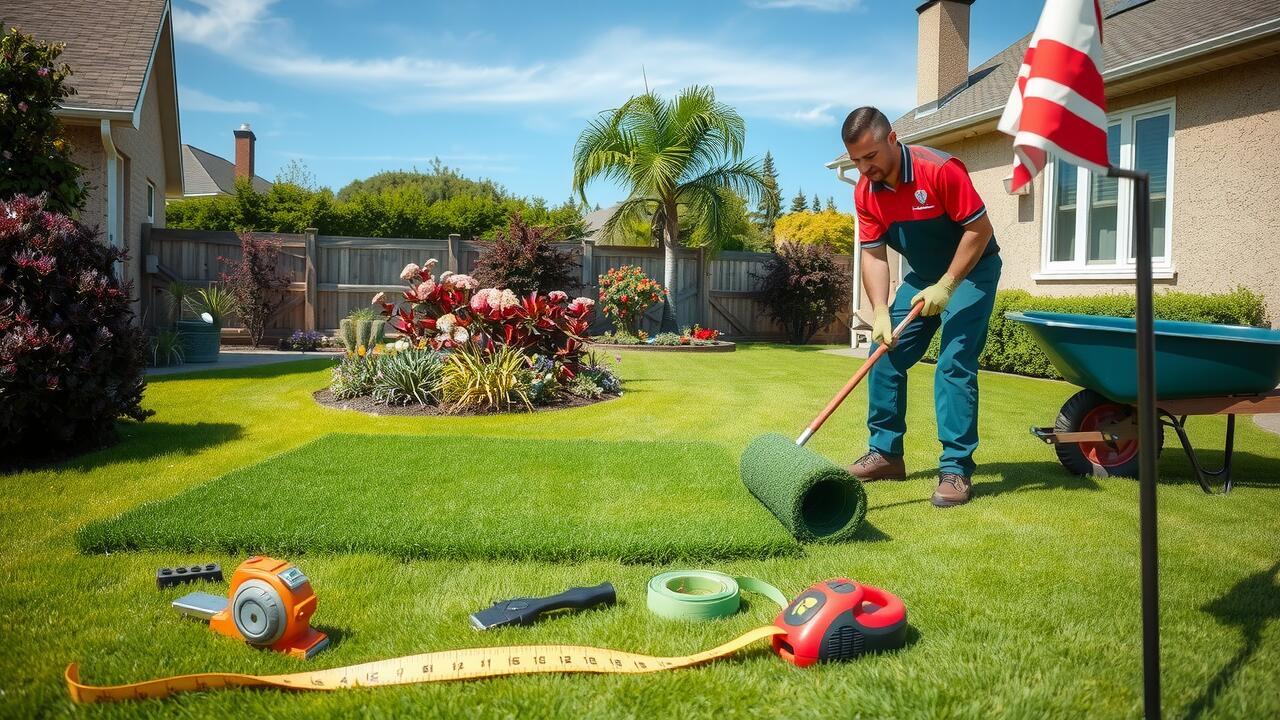
Environmental Impact on Synthetic Turf
Artificial grass offers a range of environmental benefits that can contribute to sustainability. When installed, it reduces the need for regular lawn maintenance, which typically involves the use of gasoline-powered lawnmowers and various chemical treatments. This decrease in maintenance leads to a significant reduction in carbon emissions and chemical runoff. Additionally, artificial grass eliminates the need for water, which is particularly valuable in regions facing drought or water conservation challenges.
On the other hand, artificial grass also presents certain environmental concerns that need to be addressed. The production process involves synthetic materials such as polyethylene and nylon, which raise questions about resource usage and disposal at the end of the turf’s life cycle. Proper recycling and waste management solutions are essential to mitigate these impacts. A careful balance between the benefits and drawbacks of artificial grass is crucial for making informed decisions regarding its environmental footprint.
How Weather Affects Longevity
Weather plays a significant role in determining the longevity of artificial grass. Extreme temperatures, both hot and cold, can affect the materials used in synthetic turf. Prolonged exposure to intense sunlight may lead to fading and degradation of the grass’s fibers. Additionally, heavy rainfall or consistent moisture can cause drainage issues, impacting both the appearance and usability of the surface.
Wind can also contribute to wear and tear, especially in areas where debris might be blown onto the turf. This debris can damage the fibers or create uneven surfaces. Regular maintenance and weather-resistant materials can help mitigate these effects, ensuring that artificial grass remains resilient against the elements over its lifespan.
Installation Techniques for Extended Use
Proper installation techniques are essential for maximizing the lifespan of artificial grass. A well-prepared base ensures stability and drainage, reducing the risk of wear and damage. Leveling the ground before installation minimizes the chances of uneven surfaces and prevents water accumulation. Incorporating a sturdy perimeter helps keep the turf in place and protects against debris intrusion and other environmental factors. These foundational steps can significantly extend the durability of the synthetic material.
Additionally, using high-quality infill materials can enhance the performance of artificial grass. Infill not only provides stability but also supports the blades, helping them maintain their upright position. Regular maintenance practices, such as brushing the surface and removing debris, can also contribute to the longevity of the grass. Attention to these installation details ensures that the artificial grass remains functional and visually appealing for years to come.
Best Practices for Proper Installation
Proper installation is critical for maximizing the lifespan of artificial grass. Begin by preparing the ground thoroughly. Remove any existing sod, rocks, or debris to create a clean and even base. A well-compacted layer of crushed stone or gravel serves as an excellent foundation. This provides proper drainage and prevents pooling of water, which can lead to premature wear and tear on the synthetic turf.
When laying the artificial grass, ensure the seams are tightly joined. Using quality adhesives or seaming tape helps to create a seamless look and prevents edges from fraying over time. After installation, regular maintenance practices, such as brushing the fibers and keeping the turf free of debris, will further enhance the durability of the artificial grass. Following these best practices during installation can significantly extend the service life of the turf.
Cost Considerations Over Time
The initial investment in artificial grass can seem daunting compared to traditional lawn options. However, when considering the ongoing costs associated with maintaining a natural lawn, such as water bills, fertilizers, and lawn maintenance services, the financial perspective shifts. Homeowners may find that the reduced need for irrigation, mowing, and pest control translates into significant savings over time. These factors often make artificial grass a more economical choice in the long run, particularly in regions facing water restrictions or varying climate conditions.
Beyond immediate savings, artificial grass can also increase property value. A well-maintained synthetic lawn enhances curb appeal and attracts potential buyers, offering a solid return on investment. The appeal of low maintenance can be enticing, especially for busy families or individuals with limited time for yard upkeep. As energy and resource conservation becomes more important, artificial grass stands out as an environmentally-friendly option that aligns with sustainable living goals.
Long-Term Savings with Artificial Grass
Investing in artificial grass can lead to significant long-term savings for homeowners. While the initial cost may appear higher than natural grass, the reduction in maintenance expenses quickly offsets this expense. No need for regular mowing, watering, or fertilizing translates into lower utility bills and less wear on lawn care equipment. Additionally, artificial grass can endure various weather conditions without significant deterioration, ensuring a consistent appearance and usability throughout the year.
Moreover, the durability of artificial grass means that replacement costs are infrequent. Quality installations can last for 15 to 25 years, sometimes even longer, depending on usage and care. Homeowners can enjoy a lush, green lawn without the recurring costs associated with traditional landscaping. As maintenance and repair costs accumulate over time, artificial grass often proves to be a cost-effective solution that enhances property value without the ongoing financial burden.
FAQS
What is the typical lifespan of artificial grass?
The typical lifespan of artificial grass ranges from 10 to 20 years, depending on factors such as installation quality, maintenance, and environmental conditions.
How does weather impact the longevity of synthetic turf?
Weather can significantly affect the lifespan of synthetic turf. Extreme temperatures, heavy rainfall, and UV exposure can lead to wear and tear, while proper drainage and ventilation can help enhance durability.
What installation techniques can help extend the life of artificial grass?
Using high-quality materials, ensuring a proper base preparation, and following best practices for seam and infill installation can all contribute to the longevity of artificial grass.
Are there specific maintenance practices to follow for artificial grass?
Yes, regular maintenance practices such as brushing, cleaning debris, and checking for drainage issues can help preserve the appearance and lifespan of artificial grass.
How does the cost of artificial grass compare to natural grass over time?
While the initial investment for artificial grass can be higher, it often leads to long-term savings due to reduced maintenance costs, water savings, and the elimination of mowing and fertilizing expenses.
